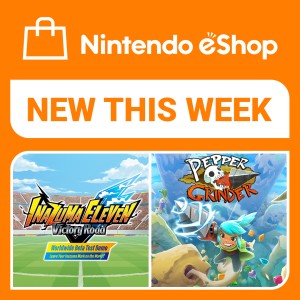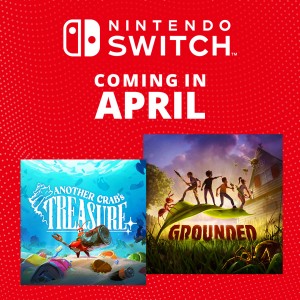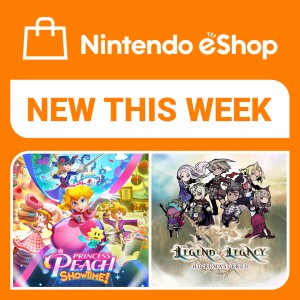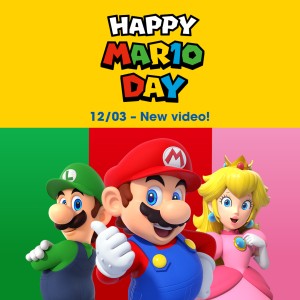Interview: Eiji Aonuma (Zelda)
18/07/2007
For more than eight years Eiji Aonuma has been making his mark on The Legend of Zelda. In Ocarina of Time, he helped usher Link into the 3D realm, and with the new Phantom Hourglass for Nintendo DS he oversaw a revolution in control that has transformed the Zelda universe. That transformation has resulted in a game that has been sold out in Japan since the game's launch in June.
The Legend of Zelda: Phantom Hourglass is controlled completely with the stylus on the Touch Screen. The player taps a spot on the screen to make Link move there and taps at enemies to make the hero in green attack them. The game will also feature a two-player Battle Mode that can be played over Nintendo Wi-Fi Connection.
At the E3 expo in Santa Monica, Calif., Mr Aonuma sat down with us to discuss the changes to Link and the Zelda franchise.
Nintendo of Europe: With Twilight Princess for Wii and Phantom Hourglass for DS, what have you learned about the versatility of the Zelda universe with regards to a new control system?
Eiji Aonuma: Actually I was working on the DS version of Zelda before we began working on the Wii version of Zelda, and having experienced the all-Touch Screen control with the DS version, I realised that I could really change how the player experiences the game in the Wii version as well - for example, by using the pointer to aim the bow and arrow.
So it changed my approach towards the game and forced me to think about how the player interacts with the game and how the player communicates with the game through the control. It definitely changed my attitude in how I should develop the game and really made me think about the player's experience.
NoE: How would you describe a Zelda adventure to someone who has never played one?
EA: Having released the Japanese version of Phantom Hourglass, I've come to discover there are many non-Zelda players who have picked it up. I think many of those people were interested in how the Touch Screen control works, and that brought them into the Zelda universe.
If I were to describe it to someone who's never played it before, I would say that, because it no longer requires complicated controls, it's a game with many puzzles that will really leave you with a feeling of accomplishment. You have to be very thoughtful as there's a lot of strategising involved.
NoE: What were some of the challenges you faced in transforming a Zelda game from something enthusiasts loved to something accessible to everyone?
EA: As for challenges in bringing in new players and appealing to new players, with Phantom Hourglass it's not as though I wanted to create something that was only for non-Zelda fans. I think the biggest challenge was creating something that would appeal to traditional Zelda gamers and maybe non-gamers. I definitely did not want to alienate those Zelda fans who have been so faithful, and I feel that with Phantom Hourglass I was able to create something that appealed to both audiences.
NoE: We'd like to talk about the development process briefly. With games that are as text-heavy as the Zelda games, at which stage in the development cycle do you finalise the text?
EA: We work on the text until the very end, until we really know it's ready to go. Text in regards to storyline, that might be locked down earlier, but because there are so many puzzles and clues we need to give the player, even after we've got the storyline locked down, we need to make sure the player has all the information he needs through text to enjoy the game and finish it.
NoE: In Europe the game needs to be translated into many different languages. Does this have an impact on when the storyline gets finalised? Is that a concern as far as the development process is concerned?
EA: Ideally, we would be able to do a worldwide simultaneous release for all Zelda titles because it would make us as developers of the game happier, and I'm sure it would make the users happy as well. We're doing everything we can in minimising localisation time, but it all depends on the schedule of the Japanese version. We do take localisation time into consideration when we're planning the development schedule, but again the Japanese version has to be complete or as complete as possible.
NoE: In the Japanese version, a person can touch a (text) character, the kanji, to read more information about it. Why did you do that?
EA: Actually this feature is not one that I thought up. It was something one of my staff members created, and then when he showed it to me, I was very impressed and I wanted to use it.
The need for this - we call it ruby text - came because on the DS we have such a small screen that the text becomes very small, which makes it harder to read. However, if you use big text, then you won't get a lot of text in there. So in some cases the text can be hard to read, especially kanji. So we created the ruby text so that even if you (couldn't recognise) exactly what the kanji was, you could see how to read it. In fact, this was something Iwata-san [Satoru Iwata, President of Nintendo, Ed.] really liked, and he's saying that moving forward, every DS game should have this feature in it. As an interesting sidenote, my 5-year-old son has actually been learning kanji because of the ruby text.
NoE: So it started out because of visual problems and not for an education purpose, but then it turned out to be an educational experience?
EA: Yes, exactly.
NoE: The game is selling incredibly well in Japan. How do you personally gauge success?
EA: Probably that moment when Miyamoto-san [Nintendo's most famous game designer, and creator of The Legend of Zelda series, Ed.] says you've made something good, which doesn't happen very often, but with this Phantom Hourglass he said that.
NoE: What would the videogame world be like without Zelda games?
EA: I could never imagine - or think - about, anything like that. If there was no Zelda, I probably wouldn't be a producer or director. Actually, I wanted to become a director because I wanted to work on games like Zelda; that was my motivation. I wanted to improve on Zelda; that's why I became a producer. I don't know about the game industry as a whole, but personally, I probably wouldn't have become part of the game industry if it wasn't for Zelda.
NoE: As a final question, if you could take Link out of Hyrule and drop him in another world, when and where would the game be set?
EA: Personally, I've thought a lot about what would happen if a hero like Link was to live in the contemporary world. Would he survive? I feel like that would be a huge challenge - to create a game based around that.
NoE: Mr. Aonuma, thank you very much for your time!
The Legend of Zelda: Phantom Hourglass will be in shops 19 October, only on Nintendo DS.





